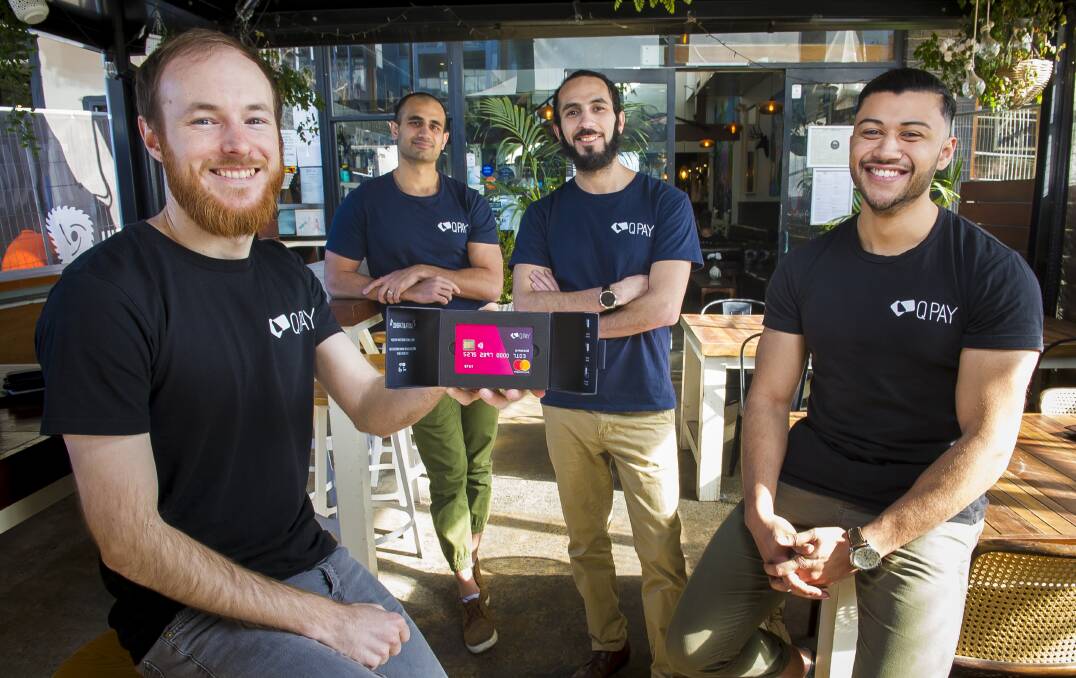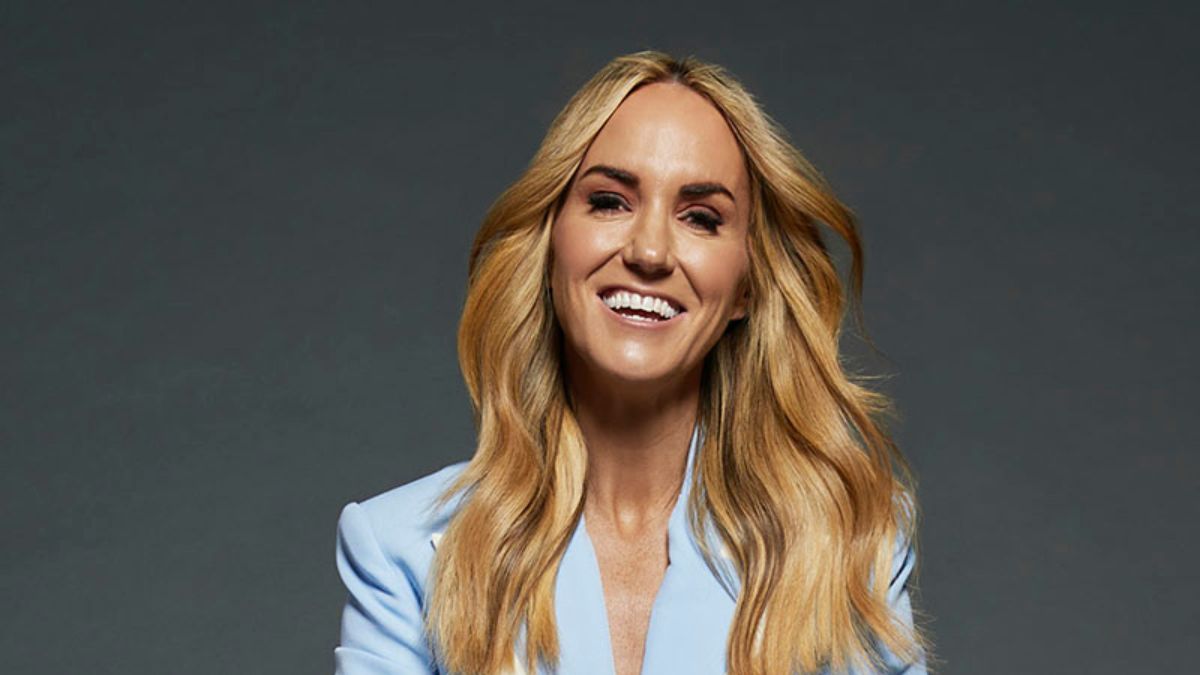Do You Have a Growth Mindset? The Keys to Unlocking Your Business's Mega Growth
I’ll never forget the final investment of Shark Tank Season 4. The energy in the room was electric. In walked the team from QPay, a business designed to simplify the financial lives of university students. They had the passion, a smart solution, and a clear vision. It was a fantastic way to end the series.
But as I’ve said so many times, the deal in the Tank is not the end of the story; it’s the beginning of a new, more challenging chapter. The real work of building a great company happens far from the television cameras, in the day-to-day decisions of strategy, technology, and customer experience.
That’s why I was so thrilled to sit down on my podcast with QPay co-founder Moe. Their business has gone from strength to strength, even completing a successful crowdfunding initiative. But like every ambitious founder, Moe is not resting on his laurels. He’s looking at the next mountain to climb, and he came to our conversation with the big, strategic questions that define a leader who is serious about scale.
His central question, and one that echoes in the minds of countless founders, was this: "Do you need a tech founder?"
This question opened up a powerful conversation about how to build and lead a technology-driven company, how to get out of your own way to achieve mega growth, and the single most important asset any founder can possess: a growth mindset.
Today, inspired by my energizing catch-up with Moe, I want to give you my definitive guide to unlocking the next level of growth, whether you're a tech genius or you can't write a single line of code.
The Tech Founder Fallacy - You Don't Need to BE the Expert, You Need to BUILD the Expertise
Let’s tackle Moe’s big question head-on. Do you need to be a technical co-founder to build a successful tech-enabled business? My answer is an emphatic no.
I am not a coder. I didn't build the RedBalloon website myself. But I did build one of Australia's most successful e-commerce businesses. The belief that you must personally possess the technical skills is a fallacy. What you must possess is a deep respect for technology, a clear vision for what you want it to do, and the leadership ability to bring the right expertise around you.
Your job as the founder is not to write the code. Your job is to be the Chief Translator. You must be able to translate your business vision into a clear product roadmap for your technical team, and then translate their technical challenges and capabilities back into business strategy.
So, how do you build out that expertise if it's not your background?
1. Hire or Partner with a Brilliant Technical Lead: This is your first and most critical step. You need a senior technologist—whether it's a CTO, a Head of Engineering, or a lead developer—who you trust implicitly. This person is your strategic partner. You bring the "what" and the "why"; they bring the "how." The key is to hire for both technical brilliance and communication skills. They must be able to explain complex concepts in simple terms.
2. Create a Technology Advisory Board: This was a key piece of advice I shared with Moe. A formal advisory board is one of the most powerful and underutilized tools for a non-technical founder. This is a small group (2-3 people) of seasoned, senior technology leaders from outside your company who you meet with quarterly. They are not there to do the work; they are there to provide high-level strategic guidance. They can help you:
- Vet your technical strategy: Are you building on the right platform? Are you making scalable choices?
- Sense-check your hiring decisions: They can help you interview senior technical candidates to ensure they truly have the skills they claim.
- See around corners: They can alert you to emerging technologies or trends that could impact your business.
This board gives you an incredible level of confidence and prevents you from being "blindsided" by technical issues you don't understand.
3. Involve Your Customers in Product Development: Your customers are your ultimate source of truth. The best technology is built in constant collaboration with the people who will actually use it.
- Create a "Customer Council" or "Beta Group": Invite a small group of your most engaged customers to be part of an exclusive group that gets to test new features before they are released.
- Listen to their feedback relentlessly. What do they find confusing? What feature would make their lives easier? Their insights are more valuable than any internal brainstorming session. This ensures you are always building what the market actually wants, not just what your engineers think is cool.
The Biggest Obstacle to Mega Growth - Getting Out of Your Own Way
During our conversation, I reflected on my own journey and what gets in the way of achieving truly massive, exponential growth. It's almost never a competitor or a market shift. The biggest obstacle is almost always the founder themselves.
Mega growth requires a founder to evolve. The very traits that made you successful initially—your hands-on approach, your attention to detail, your need to control the quality—can become the shackles that limit your scale.
To achieve mega growth, you must master the art of letting go.
- Let Go of Tasks: You must aggressively delegate and outsource everything that is not in your unique "zone of genius." If someone else can do a task to 80% of your standard, let them do it. Your time must be focused on the 1-2 things that only you can do to drive the business forward.
- Let Go of Decisions: As you build a leadership team, you must empower them to make decisions. Give them clear goals and boundaries, and then trust them to execute. If every decision still has to cross your desk, you are the bottleneck. Your business can never grow bigger than your personal capacity to make decisions.
- Let Go of Your Original Idea: Sometimes, the market pulls you in a slightly different direction than your original vision. A growth mindset means being willing to follow the data and the customer feedback, even if it means admitting your initial hypothesis wasn't perfect. Be married to the problem you are solving, not to your first solution.
I know firsthand how hard this is. It requires a deep level of trust in your team and a secure sense of your own value beyond the day-to-day tasks. But this evolution is non-negotiable for scale.
The Power of a Growth Mindset - Your Ultimate Competitive Advantage
This brings us to the core concept of our conversation. What enables a founder to let go, to build great teams, and to constantly push for the next level? It is the deliberate cultivation of a growth mindset.
The term, coined by psychologist Carol Dweck, describes the belief that your abilities and intelligence can be developed through dedication and hard work. The opposite is a fixed mindset, the belief that your talents are innate gifts.
A founder with a fixed mindset avoids challenges for fear of failure, ignores feedback, and feels threatened by the success of others. They believe they need to be the smartest person in the room.
A founder with a growth mindset:
- Embraces challenges as opportunities to grow.
- Sees failure not as a personal indictment, but as a learning opportunity.
- Seeks out feedback, even when it's critical.
- Is inspired by the success of others and actively seeks to hire people who are smarter than them.
Your mindset is the lens through which you see your entire business. It dictates whether you see problems as roadblocks or as puzzles to be solved.
The 5-Year Challenge: Working Backwards from Your Vision
How do you put a growth mindset into action? I challenged Moe with an exercise I use constantly.
- Look out 5 years from now. Forget the immediate obstacles. Imagine QPay has achieved wild, "mega" success. What does that look like? Be specific. How many customers do you have? What countries are you in? What is your team like? What is the culture? How are you seen in the market?
- Work backwards from that vision. To be that company in 5 years, what would you need to have achieved in 3 years?
- To be there in 3 years, what would you need to have achieved in 1 year?
- And to be there in 1 year, what do you need to be working on right now?
This exercise instantly lifts you out of the weeds of the day-to-day and forces you to think strategically. It makes it crystal clear what your priorities should be. It often reveals that the things you are worrying about today are completely irrelevant to your long-term vision. It helps you focus your energy on the actions that will truly move the needle.
A Fantastic Catch-Up
It was truly wonderful to reconnect with Moe and hear the QPay story continue to unfold. Our conversation was a dynamic mix of high-level strategy and tactical advice, all grounded in the reality of a fast-growing business. To see a founder so committed to learning, evolving, and embracing a growth mindset is a powerful testament to why they have been so successful.
Your Mindset is Your Strategy
The journey from a promising startup to a company capable of "mega growth" is one of profound transformation. It requires you to build expertise you don't personally possess, to get out of your own way, and to let go of the very things that once made you feel essential.
Underpinning all of this is your mindset. A growth mindset is not a soft skill; it is your ultimate strategic weapon. It's the belief that you can learn what you need to learn, build what you need to build, and become the leader you need to become.
You don't need to have all the answers today. You just need to have the courage to ask the right questions and the belief that you can grow into the solutions. That is the true secret to unlocking your next level.






